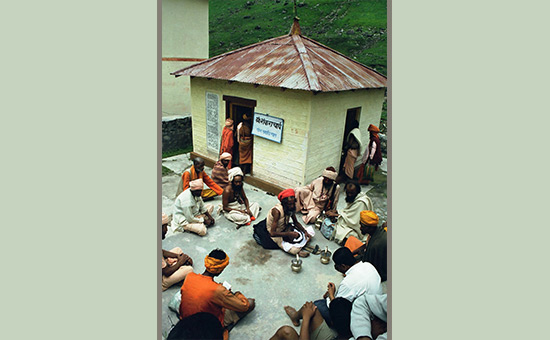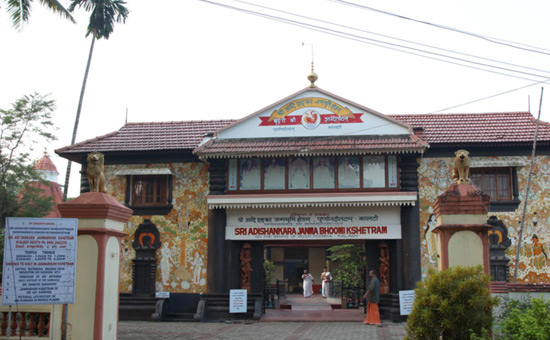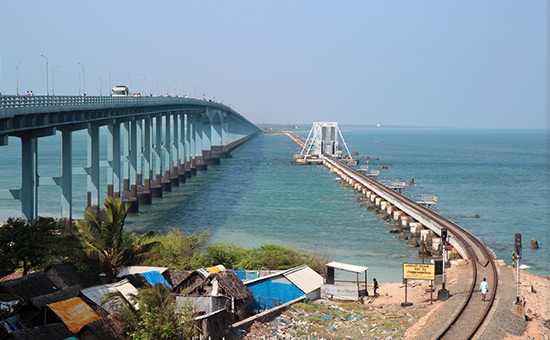-
Many
say that the Indian nation is a post British construct. Author refers to
various Indian texts and foreign travellers writings to show that the Indian
nation always existed, albeit differently from what is seen today.
As 15th
August dawns, it may be instructive to revisit the ‘Indian nationhood’ debate, which
is clearly alive and kicking as seen in the recent controversy surrounding a
Bollywood actor spouting what people with greater credentials have also been
telling us for a while now -- that there
was no India before the British
colonized us.
This is,
ironically, exactly what the colonizers had us believe. In1880, for example,
Sir John Strachey, British administrator who trained the Imperial Civil
services of India, would begin his lectures saying: “The first and most important thing to learn
about India is that there is not and never was an India”!
A
century and a half later, some influential Indians are still denying the
existence and even the possibility of an India in premodern times. Thus in
2005, a former Prime Minister in a speech at Oxford University practically
thanked the British for colonizing India and bestowing on this ancient land such
“beneficial aspects” as the railways and civil services. Underlying his
controversial gratitude was the assumption that not only did these British
institutions ‘modernise’ India, they also unified it for the first time.
Two
years later in his book, a leading historian called India “an unnatural
nation”, implying, like the former PM, that modern developments such as British
rule and the Freedom Movement forced a diverse and disconnected bunch of
regions and peoples into one, artificial and unhistorical entity called the
Indian nation.
In other words, a country as vast and heterogenous as India
could never have been considered one, and all attempts since 1947 to
forge a unified nation have been nothing more than a precarious statist project
rather than the culmination of a long and rich past.
But what does history actually tell us?
Unlike
a nation-state, a nation is first and foremost a notion: the jointly held sense
of belonging to a common territorial and cultural entity that a people name and
assert; a community of emotion, belief, and praxis.
And anyone
who has even a working acquaintance with some of the master texts of Indian
civilization - the Ramayana, Mahabharata and Mahapuranas (5th cent. BCE to 5th cent. CE) -
will immediately recognize this notion of a ‘felt community’ and common bounded
entity that is affirmed and named as Bharatvarsha in these hoary texts. The Mahabharata defined it broadly yet
resonantly as the land north of the sea and south of the Himalayas.
The Vishnu Purana even spelt out Bharatavarsha’s ethnic boundaries thus:
‘The country north of the sea and south of the Himalayas
Is Bharata and her children are Bharati.
A thousand yojanas from north to south,
It has kiratas in the east and yavanas in
the west’
(VP 2. 3, verses 1, 8)
Kiratas
refer to denizens of Assam and yavanas to those settled in Greater Punjab. Can
there be a more explicit and inclusive self-understanding of the nation called
India?
And
then there are other, later testimonies such as that of Xuan Zang, the Chinese pilgrim
who traveled to India in the 6th century and wrote that as he stood
in Nagarahara (modern Jalalabad in Afghanistan), west of the Khyber Pass, he
felt he stood at the gateway to the country called ‘Indu’.
That he
referred to India is evident from the way he described this country, again, in
classical terms as bounded by the snowy mountains to the north and the sea on
three sides, extending to an area of 90,000 li (Chinese mile) and inhabited by
70 different kingdoms.
Thus
the view that India was too vast and diverse to ever be one nation ignores the
fact that the ancient Indian concept of
nation could well recognize and embrace that vastness and diversity, and acknowledge
alongside a common unified sphere of cultural circulation.
 Sankaracharya Samadhi, Kednarnath, 2001.
Sankaracharya Samadhi, Kednarnath, 2001.
Perhaps
there is no greater evidence of this historical idea of India than the stellar
example of Shankacharya, the seer-intellectual who in the 8th
century established the supremacy of Vedanta or advaita i.e unified consciousness beyond multiplicity and form.
 Sankaracharya Birthplace Kalady, Kerala.
Sankaracharya Birthplace Kalady, Kerala.
Starting
from his home town of Kaladi, Kerala, Shankara undertook three famous digvijayas - tours of philosophical conquest of the land, intensely
debating and defeating the varied local scholarship, from Kapalikas and Pashupatas
to Mimamsakas, Vaishnavas, Shaktas, Jainas, Buddhists and so on, first in Tamil
Nadu, then Andhra, Vidarbha, and Karnataka, whereafter he reached Gujarat,
onwards to Ujjayini (M.P), Bahlika (Bactria), Shurasena (Mathura), Darads
(Gilgit Baltistan), Kuru-Pancala (Punjab, Haryana), and then Kamarupa (Assam), Gauḍa
(Bengal) and Koshala (U.P).
The
fitting culmination of these advaitic
travels was in Kashmir at the renowned centre of all learning, Sharadapitha, today
in PoK. Indeed the Shankaracharya temple at Srinagar still stands witness to
this epic visit as also to the incredible centrality of the far north of India
to the imagination of its far south.
Shankara
also established mathas in the four
cardinal directions: Badrinath, Puri, Shringeri, and Dvaraka, symbolically evoking
the extent of the Indian nation.
S.
Radhakrishnan therefore called him “a shrewd political genius and patriot.”
However, Shankara’s pan-Indian voyages also subtly demonstrate the ancient idea of India: a sphere peopled by great diversity of thought but unified by a consciousness which pierced through the illusion of multiplicity.
Part 2
In part
1, I wrote about how there was an idea of India long before the British
colonized us and that its core tenet was this country’s vastness and diversity.
The piece was warmly received by readers of TNIE and beyond.
However,
a specific section of academia was, as if on cue, enraged. This is a section
that has disowned the idea of an Indian ‘nation’ and attempts to villainise any
engagement with it.
So what if the engagement is based on irrefutable historical references. It must still be suppressed by the attribution of political and ideological motives, if not also slander, in the process exposing perhaps the deeply antagonistic agenda of such persons.
Indeed all ‘founding fathers’ of modern India swore by the ‘nation’ and ‘nationalism’, but today these seem to have become swear words for some. To
speak of India’s unity through all her vibrant diversity may invite invective
in these quarters. And to refer to her antiquity and ancient texts evinces a condescension
and communalized hostility (again a throwback to colonial mindsets). This is
accompanied by the teleological championing of the present and the recent as
all things real and enlightened.
However,
the politics and hubris of myopia should not disable efforts to address the
simplest curiosity a people can have: how far back do they go?
Here
then are some more examples from premodern history of a clear conception of
India as a unified geographical space peopled by cultural and other kinds of plurality.
We
spoke last time of the subcontinental evidence from the Mahabharata and Vishnu Purana
(5th cent. BCE-5th cent. CE), the Chinese pilgrim Xuan
Zang (7th cent.), and Shankaracharya’s pan Indic voyages (8th
cent).
Of a
kind is the testimony of the Indika attributed
to the Greek ambassador, Megasthenes (4th cent. BCE), who was based
at the Mauryan court in ancient Patna. Megasthenes is reported to have
described the land of the ‘Indoi’ thus: “it has its eastern and western side [till
the south] bounded by the great sea … on the northern side it is divided from
Scythia [central Asia] by Mt. Hemodos [abode of snow]… while the western side
is bounded by the river Indus.”
 Sea Rameshwaram, Tamil Nadu.
Sea Rameshwaram, Tamil Nadu.
Later,
the celebrated geographer from the Roman Empire, Ptolemy (2nd cent.
CE) defined India and her regions in copious detail and claimed she was marked
by Hindukush in the west, snowy mountains in the north, (mouth of) the Ganga in
the east, and the ocean in the south. Interestingly, he
also spoke of an India beyond the Ganga reaching up till China.
At
about the same time, Sangam texts like the Patirruppattu,
and the later Tamil epic Shilappadikaram
(5th cent. CE), were also invoking the same geographic imagery of
the space between the snowy Himalayas and Cape Kumari (Comorin) in the oceanic
south.
In the
6th century, the Indian astronomer and polymath Varahamihira in his Brhat Samhita describes ‘Bharatavarsha’ in over 20 remarkable verses, including
an exhaustive enumeration of her many regions and communities, which includes
everyone from Kashmir, Kangra and Peshawar upto Dravidas, Kerala and Karnataka,
and from Assam, Bengal and Odisha upto Punjab and Saurashtra. As clear, robust
and inclusive a notion as could be.
Again,
the Arab traveller Al beruni in his 11th century Kitab ul Hind describes ‘Hind’ thus: “Limited in the South by the Indian
Ocean, and on all three other sides by the lofty mountains.”
This
Hind he identified with “the world extending southwards from Himavant … Bharatvarsha,
which is the centre of Jambudvipa.” We come across Bharata kshetra or Bharat
khanda in southern Jambudvipa in Jaina cosmological literature as well.
Then, the
famed Mughal historian Abul Fazl in the 16th century Ain-i -Akbari writes: “The sea borders
Hindustan on the east, west and south. In the north, the great mountain ranges
separate India from Turan, Iran and China …
Intelligent men of the past have considered Kabul and Qandahar as the
twin gates of Hindustan… By guarding these two, Hindustan obtains peace from
the alien (raider).”
Note
the reference to Kabul also resonates with Ptolemy and Xuan Zang.
The
Tibetans on the other hand called India rGya-gar (Vast Land?) or Phags-Yul (Noble Country), the source-country of
their Buddhist masters.
Their
works like Lama Taranath’s 16th century History of Buddhism in India and the later Jewel Garland of Buddhist History mention gurus from Phags-Yul
belonging to Kashmir and Peshawar (N), Andhra and Kanchi (S), Saurashtra (W)
and Bengal (E).
Conclusion
Thus on
view, again and again, over an enormous span of time and variety of contexts,
are astonishing convergences in the perception or knowledge of what India --
Bharatavarsha, Indu, Hind, Indoi, rGyar, Phags-Yul, Hindustan – was.
Though
not necessarily identical in every respect, nor coterminous with present day
boundaries or concepts, the fact that there seems to be a great deal that
continued to be held in common in the idea of India across the centuries by
Hindus, Buddhists, Muslims and Jains, by residents as well as foreign
travellers, by pilgrims, poets and chroniclers, itself deserves to be explored.
To deny traditions of continuity where they may exist, even in the midst of so much historical movement and change in an ancient continuous living civilization like India, would be to put riven politics above the pursuit of history.
The
article was first published in New Indian Express in two parts. To read part
one and part
two. eSamskriti has obtained permission from author to share.
Author is Associate Professor, Centre for Historical Studies, Jawaharlal Nehru University, New Delhi.
Also
read
1. The
Idea of India
2. Different
parts of India contributed to its Religious Life
3. Pictures
of Buddhist Heritage of the World
4. Hindu
Deities in Japan
5. Culture is at the root of Indian Nationhood